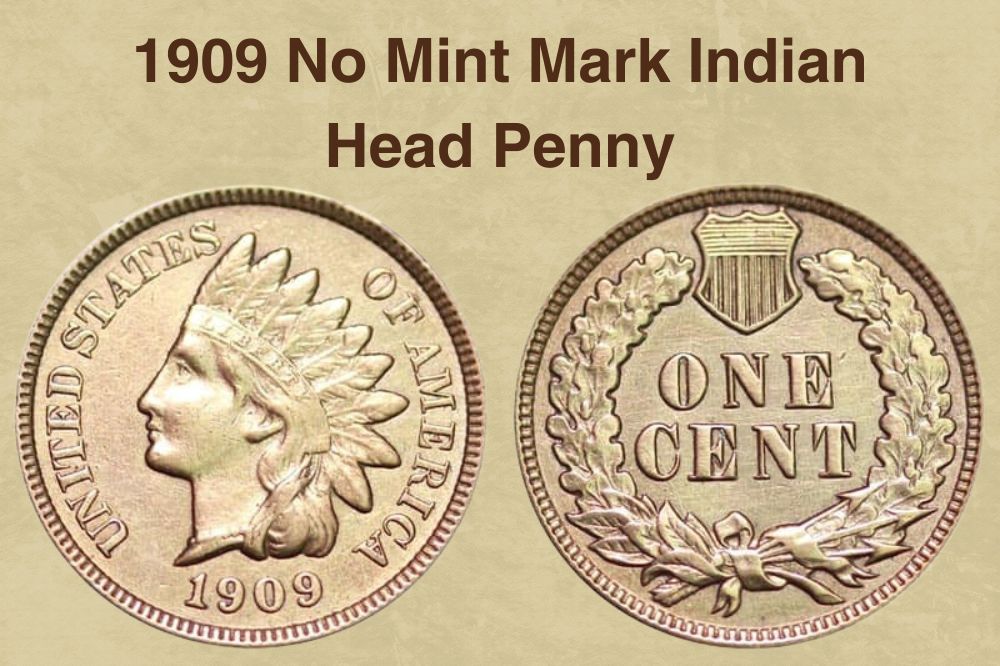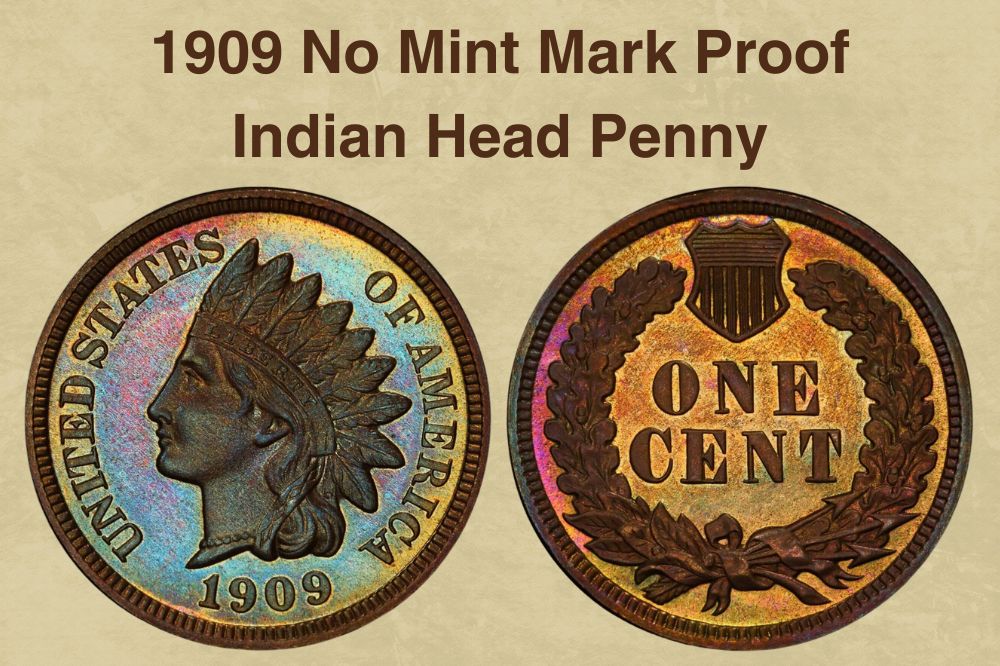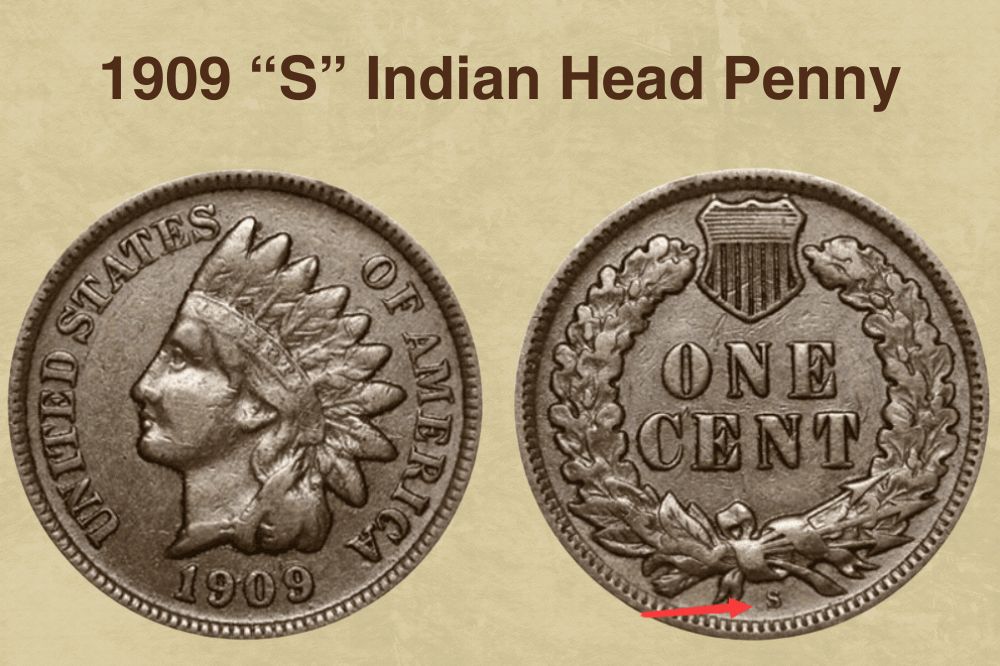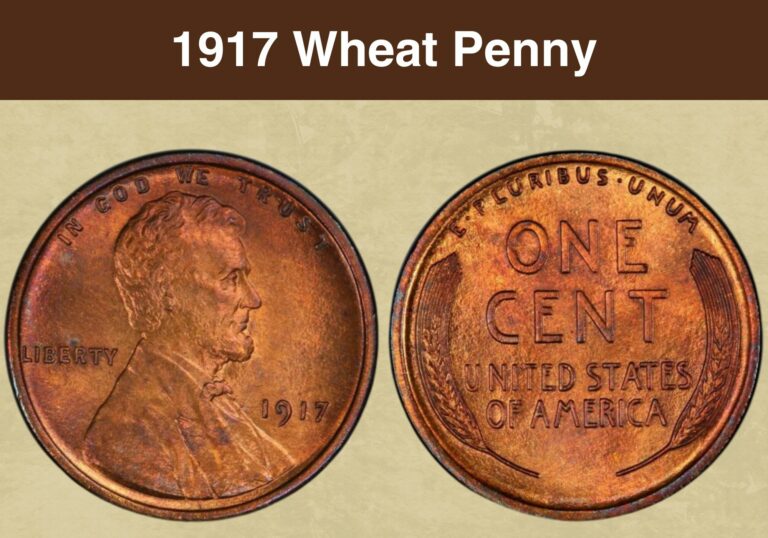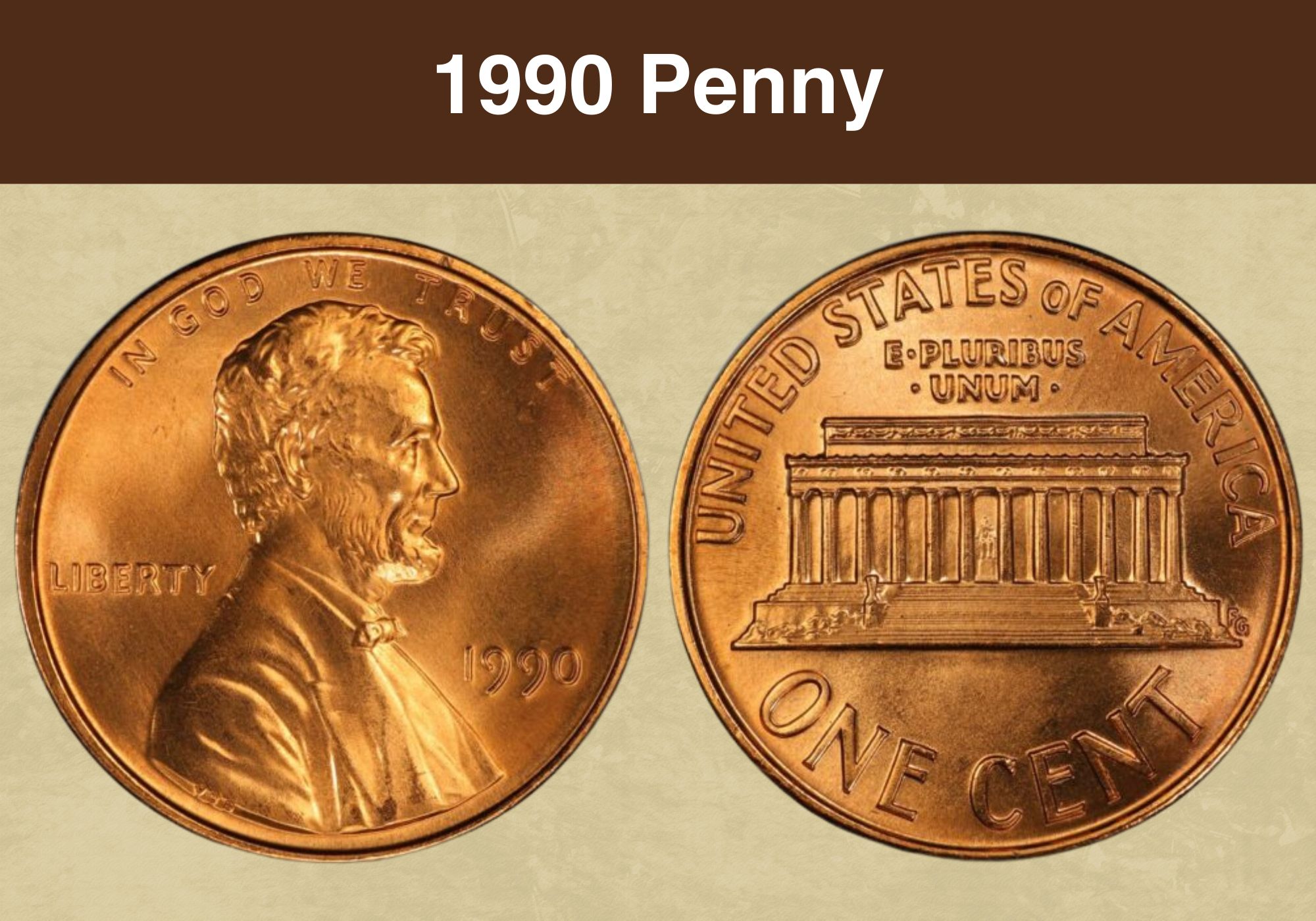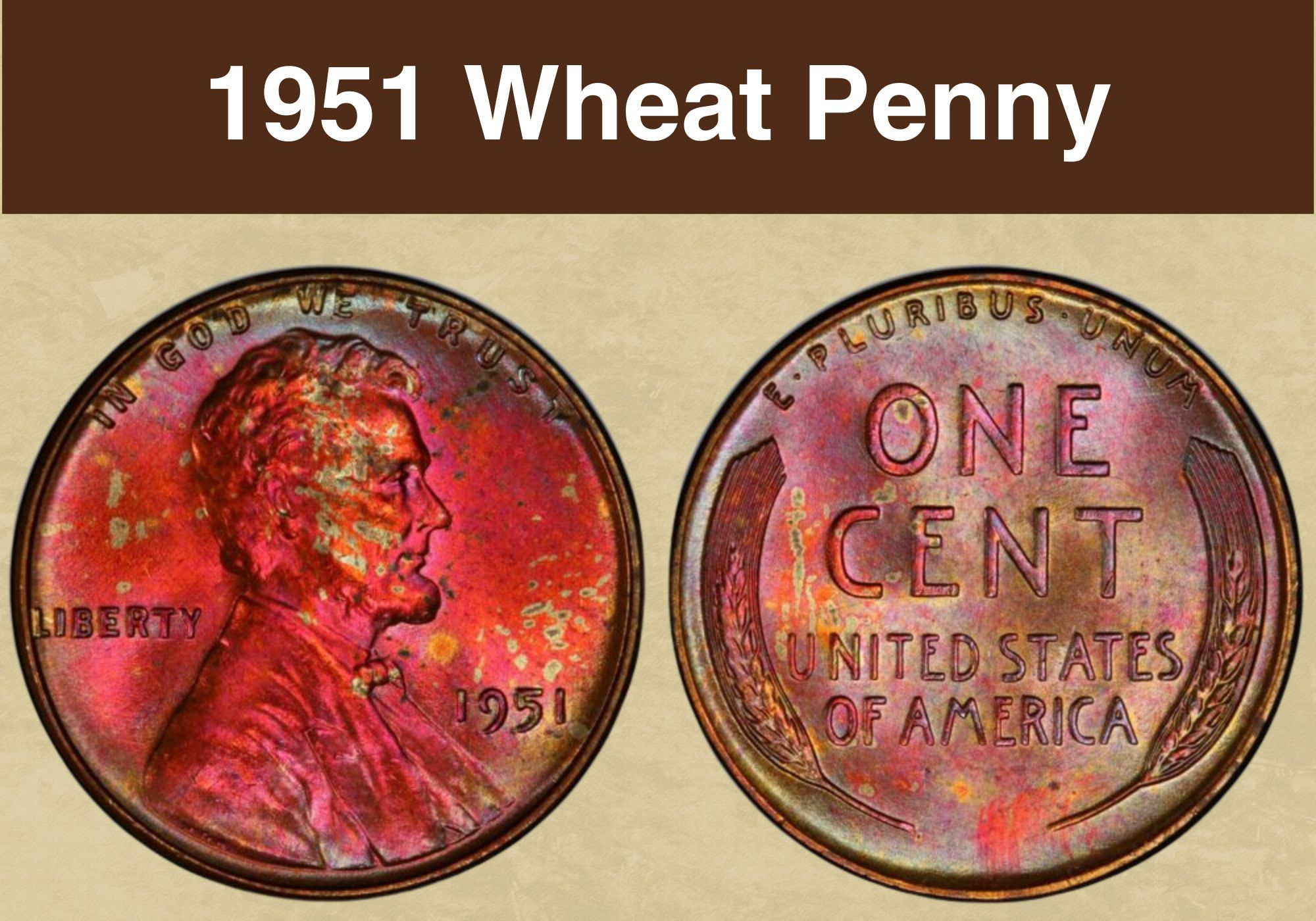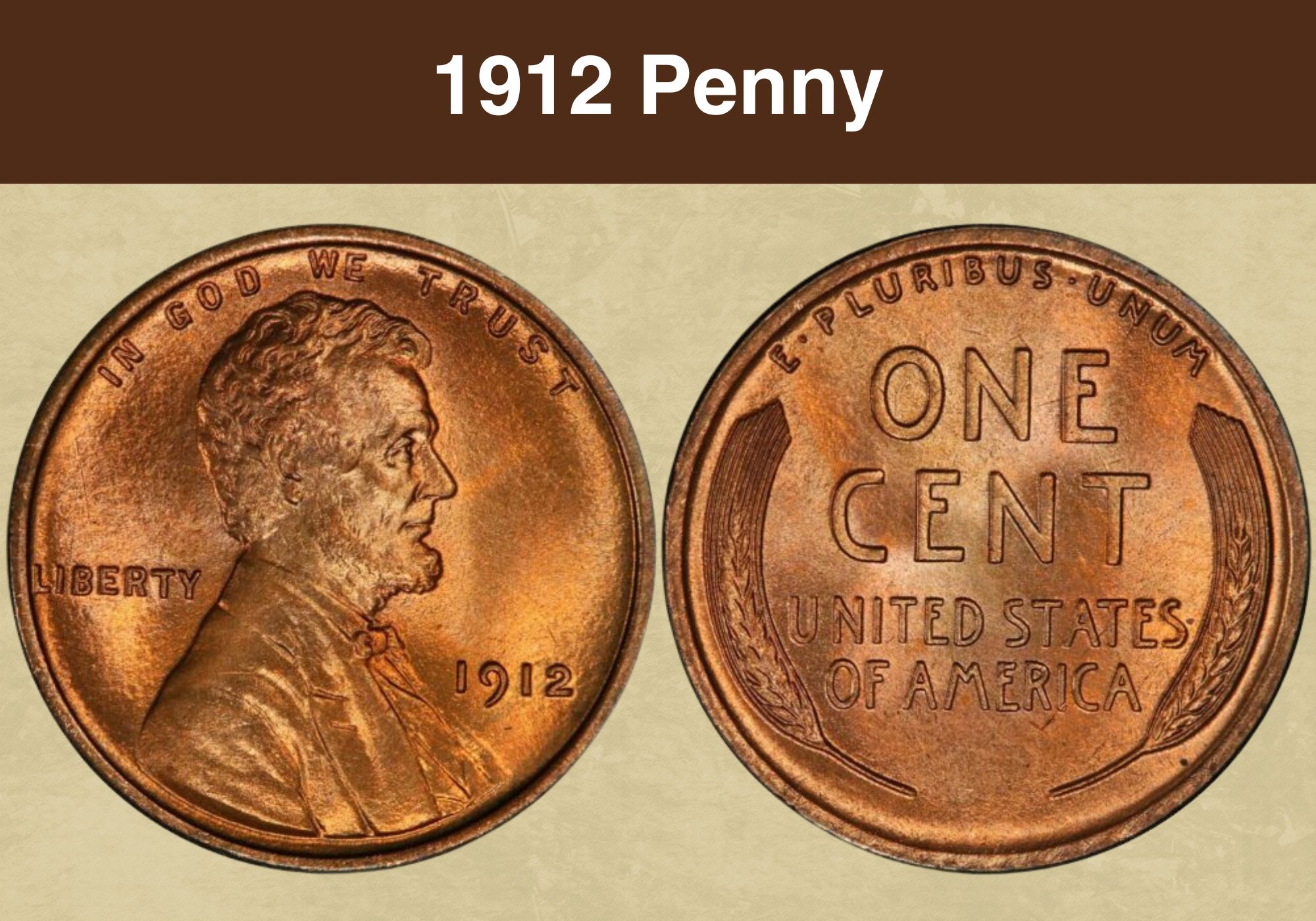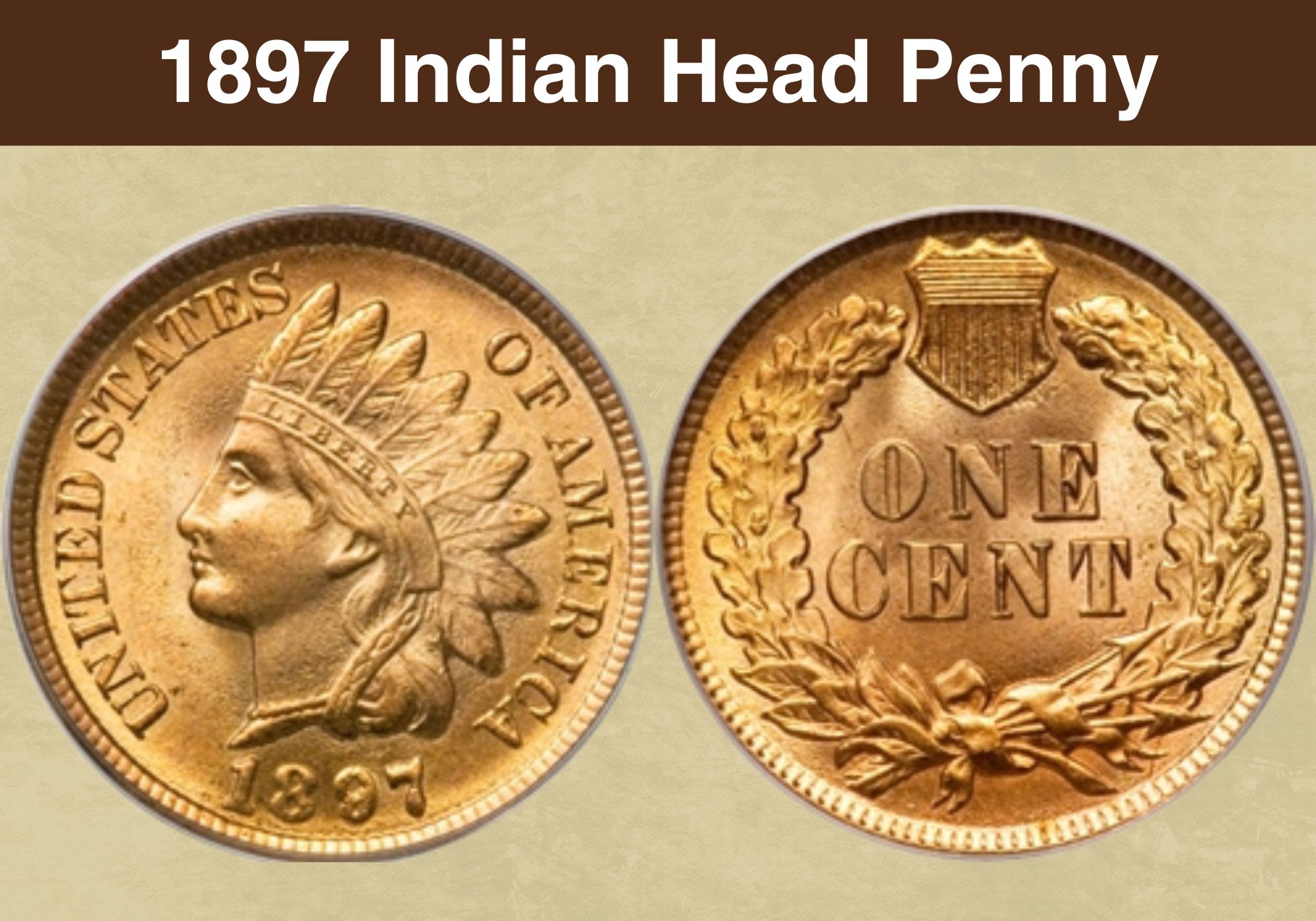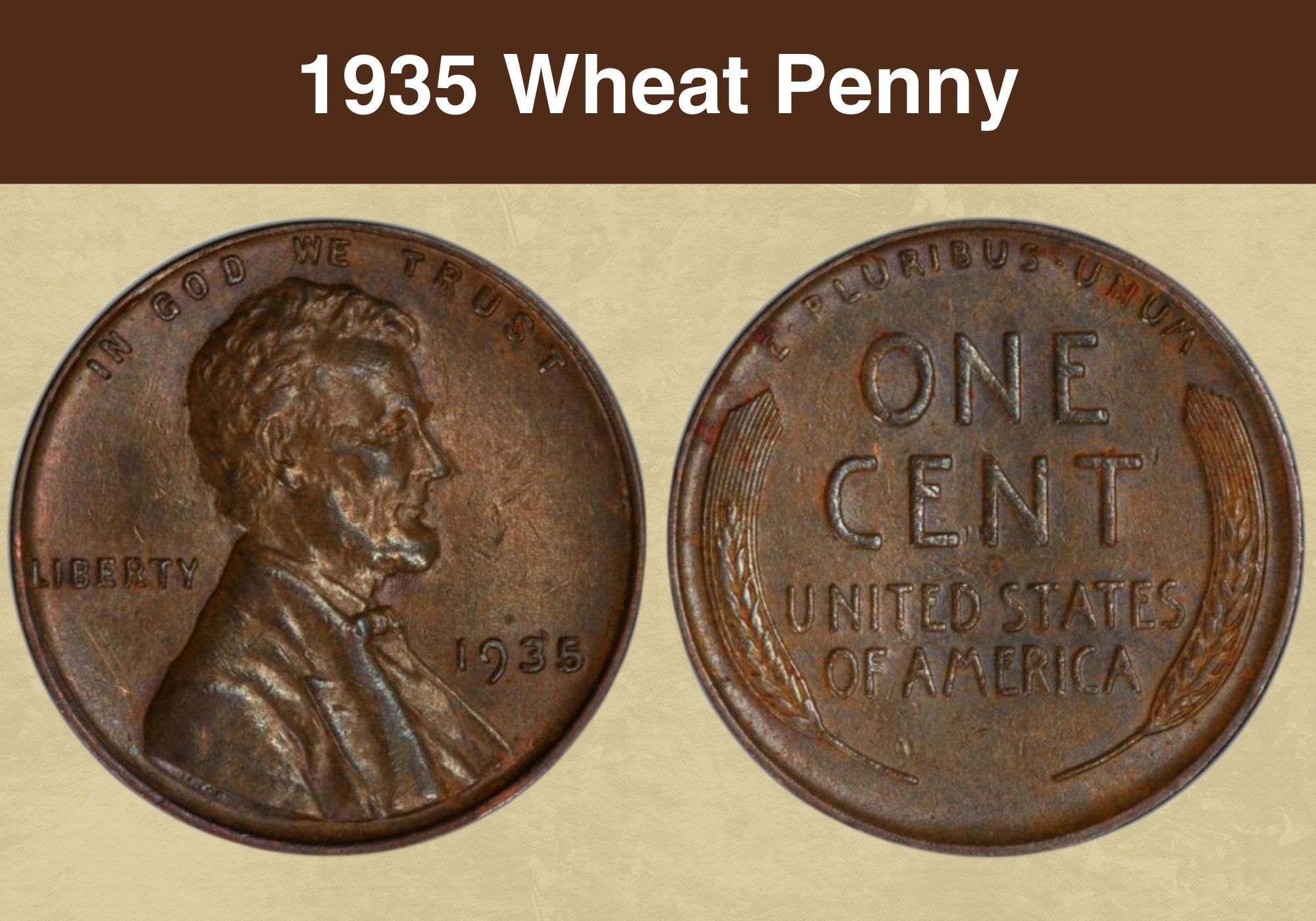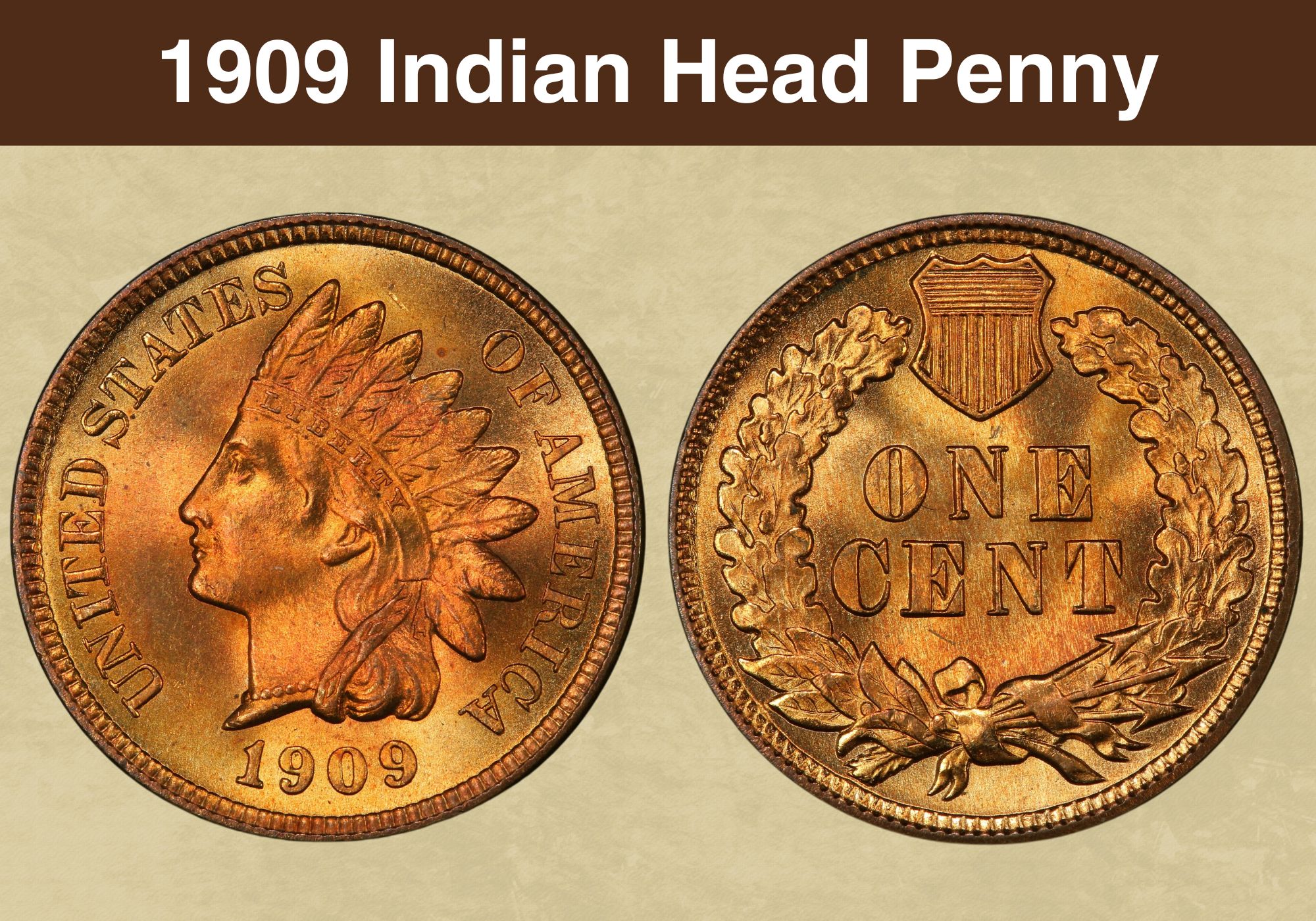
Coin Value Contents Table
The Indian head penny was in production for half a century between 1859 and 1909 before it was eventually replaced by the Lincoln penny – the first US coin to bear the face of a US president. Even though its run ended more than a century ago, however, the Indian head penny holds quite a special place in modern numismatics thanks to its rarity and historical significance.
This is very much the case for the 1909 Indian head penny as that was both the last year of the coin’s minting as well as a year of relatively low minting numbers given that the first Lincoln pennies were also minted that year.
So, if you’ve got a 1909 Indian head penny on your hands and you’re wondering what to do with it or you’re thinking of adding such a coin to your collection – here’s what you need to know about it.
1909 Indian Head Penny Value Chart |
||||
| Mint mark | Good | Fine | Extremely Fine | Uncirculated |
| 1909 No Mint Mark Indian Head Penny Value | $5.25 | $12.50 | $28 | $55 to $450 and above |
| 1909 No Mint Mark Proof Indian Head Penny Value | n/a | n/a | n/a | $140 to $1,300 and above |
| 1909 “S” Indian Head Penny Value | $350 | $475 | $725 | $1,200 to $2,750 and above |
Even though their face value was just one-hundredth of a dollar and they weren’t even made of silver or any other valuable metal, 1909 Indian head pennies can easily sell for thousands or even tens of thousands of dollars today. Those that do need to be of the highest possible physical quality, of course, which usually means that they need to have never been in wide circulation.
Even those pennies that have seen some circulation but have still been kept in top-notch condition can sell for hundreds of dollars or a bit over $1,000, however, especially if there is something extra rare or significant about them.
1909 Indian Head Penny Grading
When talking about grading coins in numismatics, you’ll often see grades going from 1 to 70 with various combinations of two capital letters in front of them. The most common of these grading systems is the Sheldon coin grading scale but there are others like it too.
The 1-to-70 scale typically refers to the preservation and visual quality of the coins, with anything under 50 usually not considered to be particularly good and only coins above 60 and 65 being seen as “Extremely Fine” or “Uncirculated”. As for the letters in front of the numbers, those are usually additional qualifiers such as Mint State (MS), Proof (PR), and so on.
For a few more visual examples of 1909 Indian head penny grading.
| # | Grade |
|---|---|
| 1 | Basal State-1 |
| 2 | Fair |
| 3 | Very Fair |
| 4, 5, 6 | Good |
| 7, 8, 10 | Very Good |
| 12, 15 | Fine |
| 20, 30 | Very Fine |
| 40 | Extremely Fine |
| 50 | About Uncirculated |
| 60 | Mint State |
| 65 | Mint State |
| 70 | Mint State |
Please check our grading guides to know your coin scale, It’s the necessary step to know the exact value of your coin.
Check out now: How to Grade Indian Head Penny?
1909 No Mint Mark Indian Head Penny Value
1909 Indian head pennies with no mint mark were made by the Philadelphia Mint. During this year, as was the case for the half a century before it, the Philadelphia Mint was the main – and almost only – US mint making these coins. So, the lack of a mint mark, while it may seem like something out of the ordinary, was actually the norm for Indian head pennies.
The mintage of these coins in 1909 was relatively low for the series – only 14,368,470 regular strike coins plus a small number of proofs we’ll mention separately below. At the time, a mintage of just about 14 million pennies was the lowest produced in Philadelphia since 1885.
Given that the US Mint also made over 100 million Lincoln pennies that year, however – the first year Lincoln pennies were minted – the low numbers for the last Indian head penny series aren’t surprising. In many other years and with many other coins, the coinage would even have been stopped the previous year.
Does all this mean that the 1909 no mint mark Indian head penny is especially rare, however? Not really. While 14 or so million coins is a lower mintage than usual, it’s still a pretty sizable number. Additionally, the fact that Indian head pennies with no mint marks were the norm for half a century means that there were a lot of them, albeit mostly from other years.
So, the only significant thing about this coin is that 1909 was the last year of its minting. In every other aspect, from its components to its design, the 1909 no mint mark Indian head penny is identical to most of its predecessors.
1909 Indian Head Penny Feature
To give you a brief on this coin’s design if this is your first time seeing an Indian head penny, it weighs only 3.11 grams, it has a diameter of 19 mm, it’s made of 95% bronze with just a bit of added zinc or tin, and it has a plain edge.
Both the obverse and reverse sides of this coin were designed by James B. Longacre. The obverse side features the left-facing head of Lady Liberty with a Native American headdress on it. Just below the head is the year of mintage – 1909 in this case – and over and around it is simply written “United States of America”.
The reverse side also has a pretty clean and simple design. At the center, in large letters, is written the coin’s value of “One Cent”. That text is surrounded by a large oak wreath with three arrows tied to its bottom. There is also a shield at the top of the coin, just about the text and between the two ends of the wreath.
The initial 1859 version of the coin featured a laurel wreath with no shield but the oak wreath & shield version was released just a year later so that design was the norm for the Indian head penny.
So, with all those mixed factors, what is the value of a 1909 Indian head penny with no mint mark?
Even though the coin had the penny’s standard design and there were quite a few of these pennies over the years, the value of this 1909 Indian head penny is still quite impressive. Even ordinary coins that have seen plenty of circulation and have gathered lots of wear and tear can sell several dollars or over $10 which, technically, is x1,000 times the penny’s face value. That’s despite it being made of just bronze too.
And, if we start looking at better-quality pennies, we can see how quickly those prices start rising into multiple dozens, hundreds, and even thousands of dollars. Great quality no-mint-mark 1909 Indian head pennies today can reach north of $1,350 and $1,700 on auctions.
In some cases, these coins can even go into the 5-digits as was the case in 2023, when a 1909 MS 67 Indian head penny was bought for $21,600.
1909 No Mint Mark Proof Indian Head Penny Value
The Philadelphia Mint also produced a few proof Indian head pennies in 1909 – 2,175 proofs, to be exact. This number is so low that, when talking about the 1909 Indian head penny, many people just group the proofs with the Philly-made regular strikes which is why you’ll often see the 14,370,645 number for the above variant instead of 14,368,470.
Still, proof coins are decisively different from regular strikes so they need to be mentioned separately. If anything, the extra small number of this proof mintage makes these coins even more noteworthy.
For starters, as proofs, these 2,175 coins were made using a different technology than regular strike coins. The Philadelphia Mint used entirely separate proof minting dies that were dipped in acid and hand-polished to give these coins a much higher detail and fidelity.
Proof coins are, after all, meant to be used for display purposes, as proofs against counterfeits, and as collector’s items – they aren’t meant for wide circulation like regular strike coins even though they bear the exact same design.
All this means a few things – first, it’s borderline impossible to find 1909 proof Indian head pennies of quality lower than Extremely Fine as none of these coins were used as currency. Secondly, the value of even the most ordinary-looking 1909 proof Indian penny is expected to be over $100 and, often, over $1,000.
This is especially the case for those pennies with a mostly reddish or at least red-brown coloring compared to proofs that are mostly brown. This applies to the regular strike coins too as well as to the “S” pennies we’ll talk about below – depending on how they’ve been stored and handled, these bronze coins can acquire a more reddish or a more brownish color over the years with the former being more valuable than the latter.
Also read: 13 Most Valuable Wheat Penny Worth Money
1909 “S” Indian Head Penny Value
1909 Indian head pennies that bear the “S” mint mark of the San Francisco Mint are some of the most valuable one-cent coins not just of this year but in general. Even though these coins are regular strikes and not proofs, they are often even more highly valued than the 2,175 Philly-made 1909 proofs.
The reason for that is simple – rarity. In 1909, the San Francisco Mint produced a grand total of just 309,000 Indian head pennies with the mint’s signature “S” mint mark.
This is a much higher number than the two thousand or so proof coins, of course, but this was also only the second year in which the 1909 San Francisco Mint had joined its Philadelphia counterpart in making Indian head pennies. The previous year was 1908 when the San Francisco Mint made 1,115,000.
This made the 309,000 “S” coins of 1909 the lowest mintage of regular strike Indian head pennies in history. The only other Indian head penny mintage below a million was the 1877 Philly-made no-mint-mark penny which included 852,500 coins – still substantially more than the 309,000 “S” coins in 1909.
This rarity, coupled with the presence of the very rare “S” mint mark for the Indian head penny series, plus the fact that this was the last year for the series as a whole, as well as the pretty high quality of that year’s “S” coins as a whole all meant 1909 “S” Indian head pennies are incredibly valuable today.
The average prices for even just sub-par pennies today are in the hundreds of dollars and they quickly rise to thousands when looking at coins of particularly high quality. If you can find a graded and high-quality 1909 “S” Indian head penny, you can easily expect it to sell for thousands and even tens of thousands of dollars.
The highest price tag we’ve seen for one of these coins so far is $97,750 paid for an MS 67 “S” 1909 Indian head penny at a Heritage auction in 2006.
Also read: 12 Most Valuable Lincoln Penny Worth Money
Rare 1909 Indian Head Penny Error List
Interestingly enough, there aren’t any known and significant 1909 Indian head penny errors out there. This is especially the case with the valuable 1909 “S” Indian head penny as the mintage of those coins was so low.
Even with no-mint-mark pennies, however, there just isn’t anything noteworthy in terms of errors to watch out for. Instead, all numismatists look for in these coins is the presence or lack of a mint mark and the overall quality. As we showed above and as you can see in other videos such as this one, the quality grade really is the main driver of the value of these coins.
Also read: 17 Most Valuable Indian Head Penny Worth Money
Where to Sell Your 1909 Indian Head Penny ?
Now that you know the value of your coins, do you know where to sell those coins online easily? Don’t worry, I’ve compiled a list of these sites, including their introduction, pros, and cons.
Check out now: Best Places To Sell Coins Online (Pros & Cons)
1909 Indian Head Penny FAQ
What makes 1909 Indian Head pennies rare?
These coins are over a century old, they are from the last year of that series’ minting, and – some of them – belong either to the low-mintage proof series or the very special San Francisco Mint sub-series bearing the “S” mint mark.
Is a 1909 Indian Head Penny worth anything?
A 1909 Indian head penny is almost always worth at least something, even if the coin isn’t in great condition and even though it’s made of just bronze. So, especially if you find a coin of better quality, it will definitely be worth selling it or even holding onto it as its value will likely keep rising in the future.
Also read: 11 Most Valuable Wheat Penny Errors

